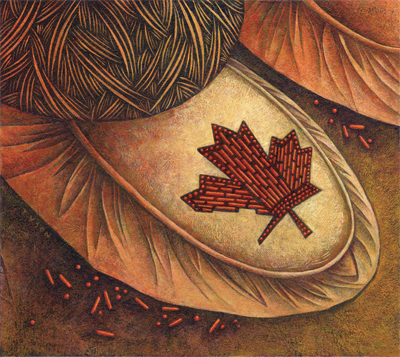 First Nations people have been in the news lately and the stories have not been positive.
First Nations people have been in the news lately and the stories have not been positive.
We recently looked on in horror at the families from Attawapiskat living in freezing winter temperatures in nothing more than wooden sheds, because of the housing crisis there. In past years, we’ve seen the awful skin diseases of the residents of Kashechewan, who had been living with contaminated water. There was also the suicide epidemic in Pikangikum, which involved kids as young as 10.
How did these horrors come about? You can trace the cause of most of these preventable problems to early colonial laws and policies. Unfortunately, the current suite of legislation that our federal government has introduced will not change the situation any time soon.
We currently have a handful of new bills at various stages of approval that cover a wide range of issues, including who gets Indian status, property ownership on reserves and band governance.
The problems with these bills are many: they’re ill conceived, don’t take into account the needs of First Nations (particularly women) and they’re being rushed through the legislative process.
These new bills are setting us up for decades of troubled reserves and lengthy Charter challenges.
For starters, First Nations people were opposed to the recently passed Bill C-3, which deals with women and Indian status. It attempts to address the gender inequality found in the 2009 McIvor v. Canada case, which addressed claims that status was being granted unfairly based on gender. But under this new law, many descendants of women who marry non-natives don’t get status.
Similar problems exist with Bill S-2, which is the fourth incarnation of legislation deal- ing with the division of property on a reserve when a marriage breaks down. But it would create new rules that are only accessible through a provincial court. The majority of the women affected will not have the resources for lawyers or access to courts to take advantage of these rights.
But it’s not just the content of these bills that poses a problem: it’s how they’ve been moved through the legislative process. Normally, bills are introduced in the House and then sent to the Senate. In the last few sessions of Parliament, however, some bills relating to First Nations have gone before the Senate first — and our Senate now contains a majority of Conservative members. Once a bill passes through the Senate, it tends to be passed through the House with limited study or debate.
Just as troubling is the lack of a proper consultation process — something the Supreme Court of Canada mandated in the 2004 Haida Nation and Taku River constitutional challenge cases.
Before Bill C-3 was introduced, for instance, Indian Affairs did not release draft legislation, just offered a discussion paper and held public meetings. This does not meet the test of free, prior and informed consent now required by the United Nations Declaration on the Rights of Indigenous Peoples.
Many aspects of these pieces of legislation conflict with existing laws, including the Charter’s equality provision, constitutionally protected Aboriginal and treaty rights and the Indian Act.
This scenario of limited consultation, no sober second thought through the Senate and conflicts with existing laws will inevitably result in a legislative nightmare, expensive and time-consuming litigation and, worst of all, a further lack of control by First Nations over their lives. Expect the next televised crisis on a reserve to owe its genesis to one of these poorly crafted pieces of legislation.
Pamela D. Palmater is a Mi’kmaw lawyer from Eel River Bar First Nation who heads the Centre for Indigenous Governance at Ryerson University.
Illustration by Sara Tyson

